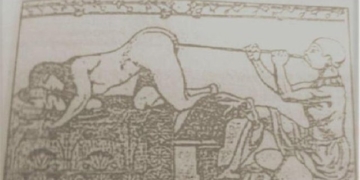Previously, scientists believed that starburst galaxy clusters formed when galaxies collided about 3 billion years after the Big Bang. However, two international research teams now suggest that these collisions occurred much earlier.
By examining the ancient past of the universe, researchers discovered that the collisions began around 1.5 billion years after the Big Bang, significantly earlier than previously predicted.

Researchers found that the collisions began around 1.5 billion years after the Big Bang. (Image source: Phys).
The research teams led by Iván Oteo from the University of Edinburgh and Tim Miller from Yale University and Dalhousie University in Nova Scotia used the Atacama Large Millimeter/submillimeter Array (ALMA) telescope and the Atacama Pathfinder Experiment (APEX) telescope to study the merging of starburst galaxies.
Starburst galaxies produce stars at a rapid rate, generating thousands of stars each year. These galaxies became prominent after the Big Bang and are located billions of light-years away from Earth.
Further observations from the ALMA and APEX Observatories revealed that these are two extremely dense galaxy groups, one consisting of 14 galaxies and another formed from ten galaxies. They are some of the most active star-forming regions, having witnessed significant changes in space since their early existence, and the galaxies within them are on the verge of colliding.
In addition to discovering the unexpectedly dense galaxy groups, researchers were also surprised by the rapid growth rates of starburst galaxies. Both quantum computing and theoretical models predict that it should take much longer for these galaxies to develop into the massive objects we see today.





















































